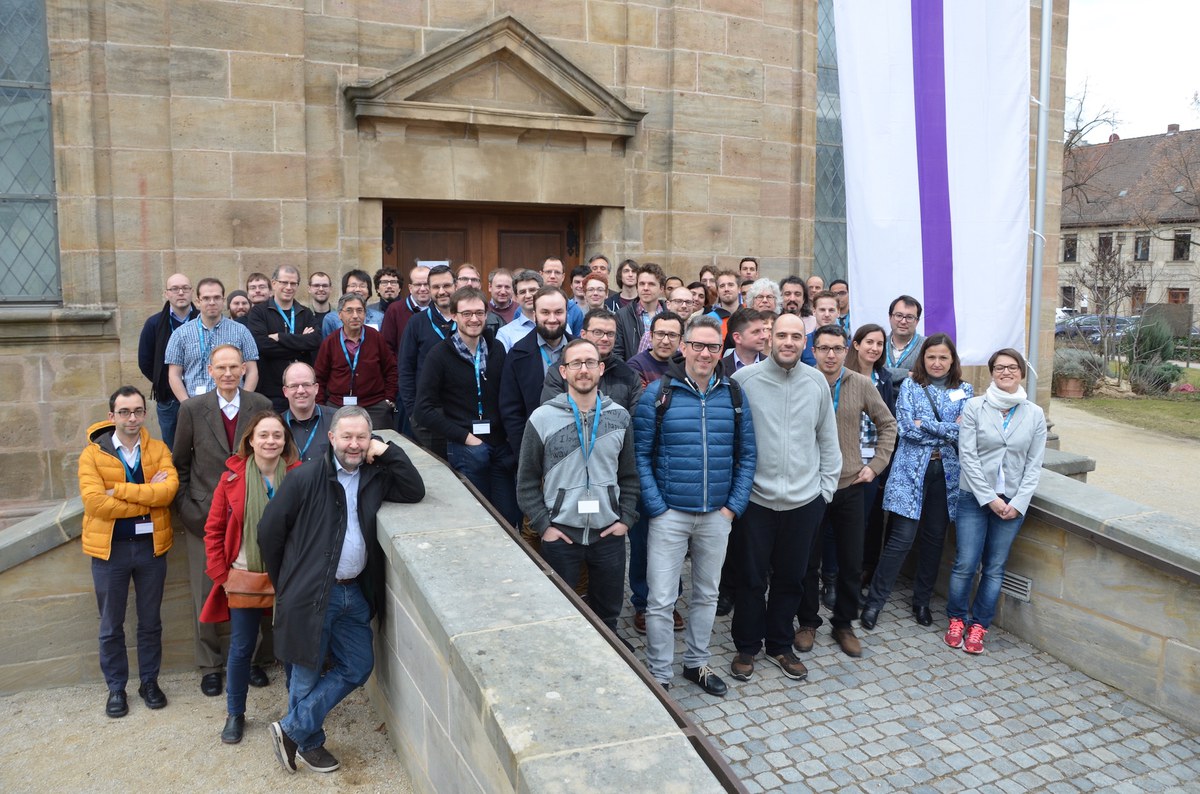Workshop Dynamics of Interfaces in Complex Fluids and Complex Flows
Just after the “Fasching” festivities, the research unit “Dynamics of complex fluids and interfaces” of HI ERN organized a four day workshop under the umbrella of the EU MP1305 COST Action “Flowing Matter” and EAM.
A common and distinctive feature of soft materials like suspensions, emulsions, foams, gels, etc., is the co-existence of multiple phases and/or components. As a consequence, their structural complexity is characterised by interfaces, whose properties determine (often more relevantly than bulk properties) the macroscopic dynamics of these systems. The stability of foams and emulsions, for instance, relies crucially on surface active agents (surfactants) and their rheology results from the micro-mechanics of interfaces and films separating the elementary constituents (droplets and bubbles). The presence of interfaces, moreover, is known to affect profoundly the swimming/propulsion mechanism (and hence the collective behaviour) of microorganisms and artificial active particles. Turbulent multi-phase and multi-component flows are of utmost importance for a plethora of natural and technological situations, like cavitation and emulsification, where the multi-scale energy transfer and dissipation processes typical of high Reynolds number flows are intimately connected with the continuous breakage and formation of interfaces controlled by surface tension.
The goal of the workshop was to bring together scientists working on theoretical modelling and simulation of fluid systems where a non-trivial interplay emerges between flow and interfacial dynamics. In the spirit of the COST initiative, the meeting was meant as an opportunity to stimulate discussions and promote collaborations on new topics at the crossroad between soft matter, active systems and turbulent flows.
The workshop enjoyed the participation of almost 70 attendees from 13 different European countries, including eminent scientists working in the fields of Soft and Active Matter and Turbulence, as well as early stage researchers that provided more than 40 invited talks and a selection of about 20 posters. FAU and EAM have been represented by 18 researchers, out of which 4 have given talks and 5 have presented posters. The high quality of the presentations was witnessed by the numerous discussions that each of them motivated. The not excessive size of the workshop, in fact, proved to be optimal to promote interactions and incipient collaborations among the participants.

